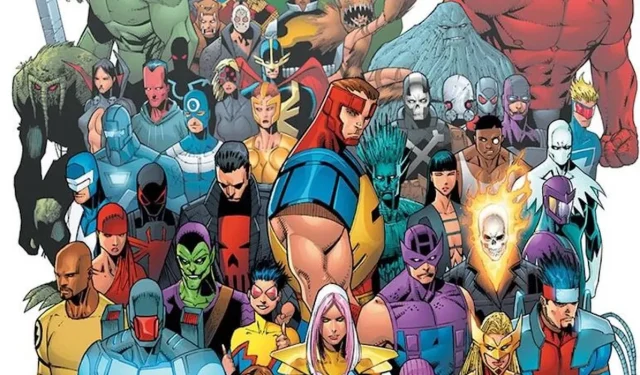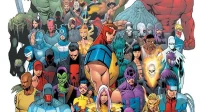As the highly anticipated Thunderbolts* film nears its release, it creates the perfect opportunity to reflect on the diverse incarnations of this complex team within the Marvel universe. Originally founded by Baron Zemo and his conspiracy of villains, the Thunderbolts aimed to masquerade their villainous activities as acts of heroism. However, through various storylines, many of these notorious figures discovered a genuine calling towards heroism, leading to a significant transformation of the team.
One of the most compelling aspects of the Thunderbolts lies in their commitment to rehabilitation. Unlike DC’s Suicide Squad, whose members often serve as expendable assets, Marvel’s Thunderbolts endeavor to change the hearts of villains and redirect their paths toward heroism. The strength of the Thunderbolts teams is embodied in those that remain true to this mission; teams that stray from this objective risk dismantling from within. Historically, villain groups fall apart due to internal conflicts, while those aligned with heroism emerge resilient. Below is a comprehensive ranking of every major Thunderbolts team, from the least effective to the most formidable.
17. Thunderbolts IX: Ravencroft Raiders
Debuted In: King in Black: Thunderbolts #1 (2021) by Matthew Rosenberg and Juan Ferreyra
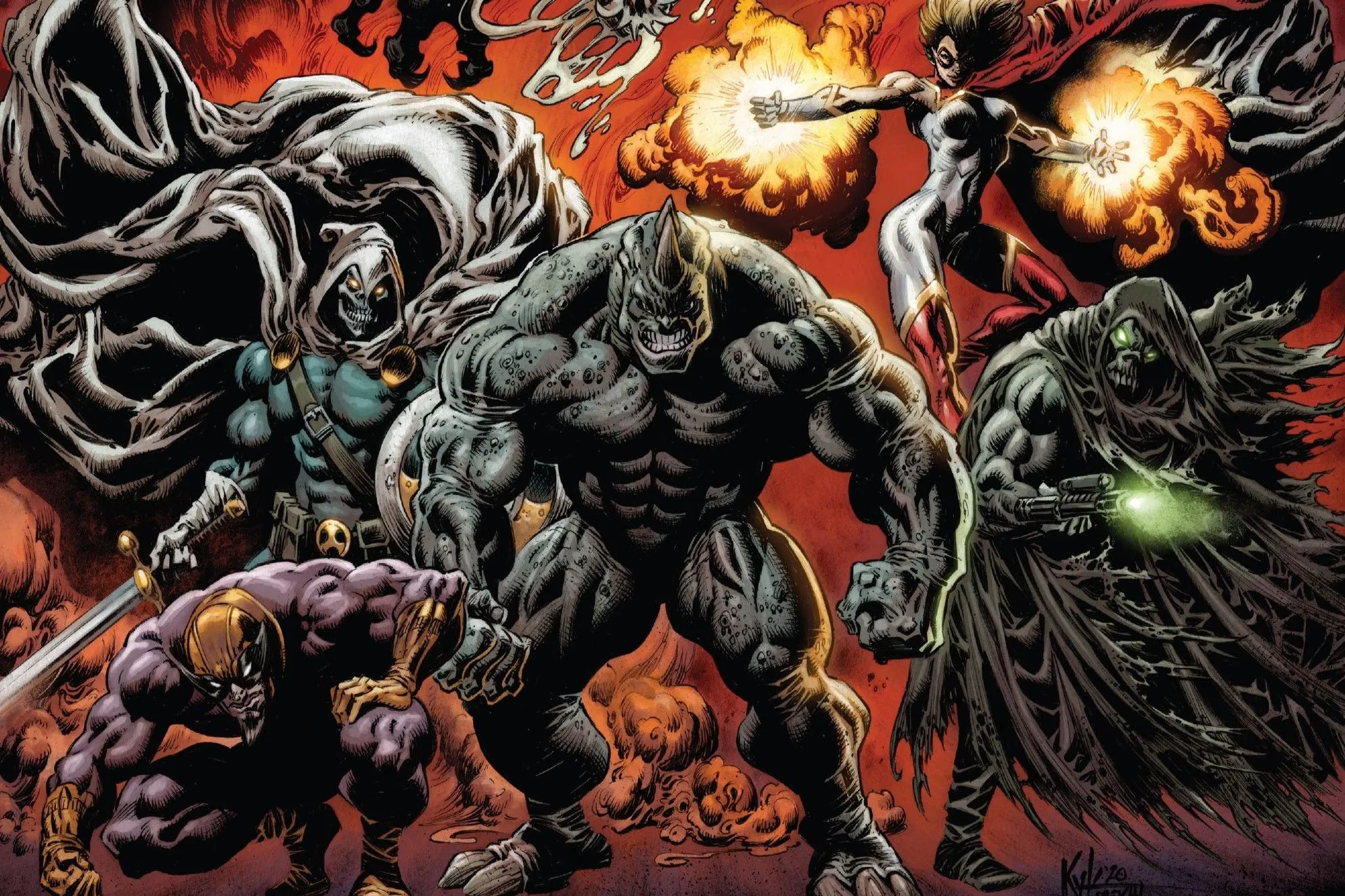
|
Notable Members: |
||
|---|---|---|
|
Mister Fear |
Batroc the Leaper |
Star |
|
Rhino |
Snakehead |
Ampere |
In the midst of Knull’s Earth invasion, Wilson Fisk, then Mayor of New York City, brought together an assortment of lesser-known villains to infiltrate the Ravencroft Institute and connect with Norman Osborn. Although Taskmaster led the mission, the team suffered devastating losses to Knull’s symbiotes long before reaching their intended destination. The team’s initial entertainment value was marred by a revolving door of unsuited members who fell victim to stronger adversaries, resulting in their eventual betrayal of Fisk and the abandonment of the Thunderbolts’ name.
16. Thunderbolts III: SHIELD Sponsored Heroes
Debuted In: Thunderbolts #65 (2002) by Fabian Nicieza and Patrick Zircher
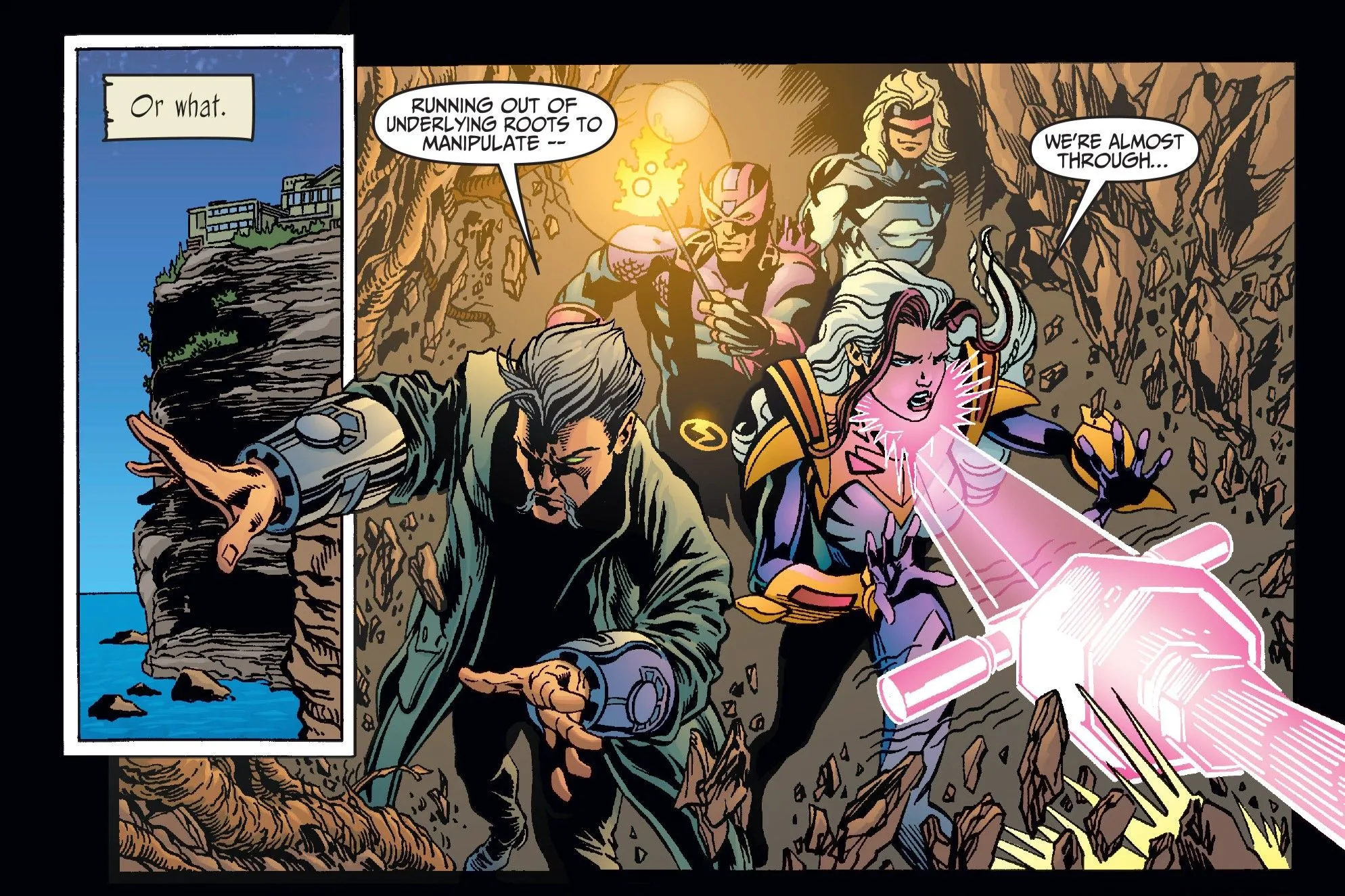
|
Notable Members: |
||
|---|---|---|
|
Songbird |
Skein (Gypsy Moth) |
Cyclone |
|
Bleackheath (Plantman) |
Harrier (Cardinal) |
Amazon (Man-Killer) |
SHIELD attempted to legitimize the Thunderbolts following Baron Zemo’s exposure as a fraud. With Hawkeye in command alongside veteran Songbird, this iteration had a rocky start. It became evident that when Hawkeye was absent, the team struggled. Their major adversaries, the Masters of Evil, outmatched the Thunderbolts during his absence, demonstrating a lack of cohesion. Eventually, Hawkeye relinquished leadership to Baron Zemo, believing he had changed, although Zemo continued to harbor self-serving motives.
15. Thunderbolts VII: Luke Cage’s Convicts
Debuted In: Thunderbolts #144 (2010) by Jeff Parker and Kev Walker
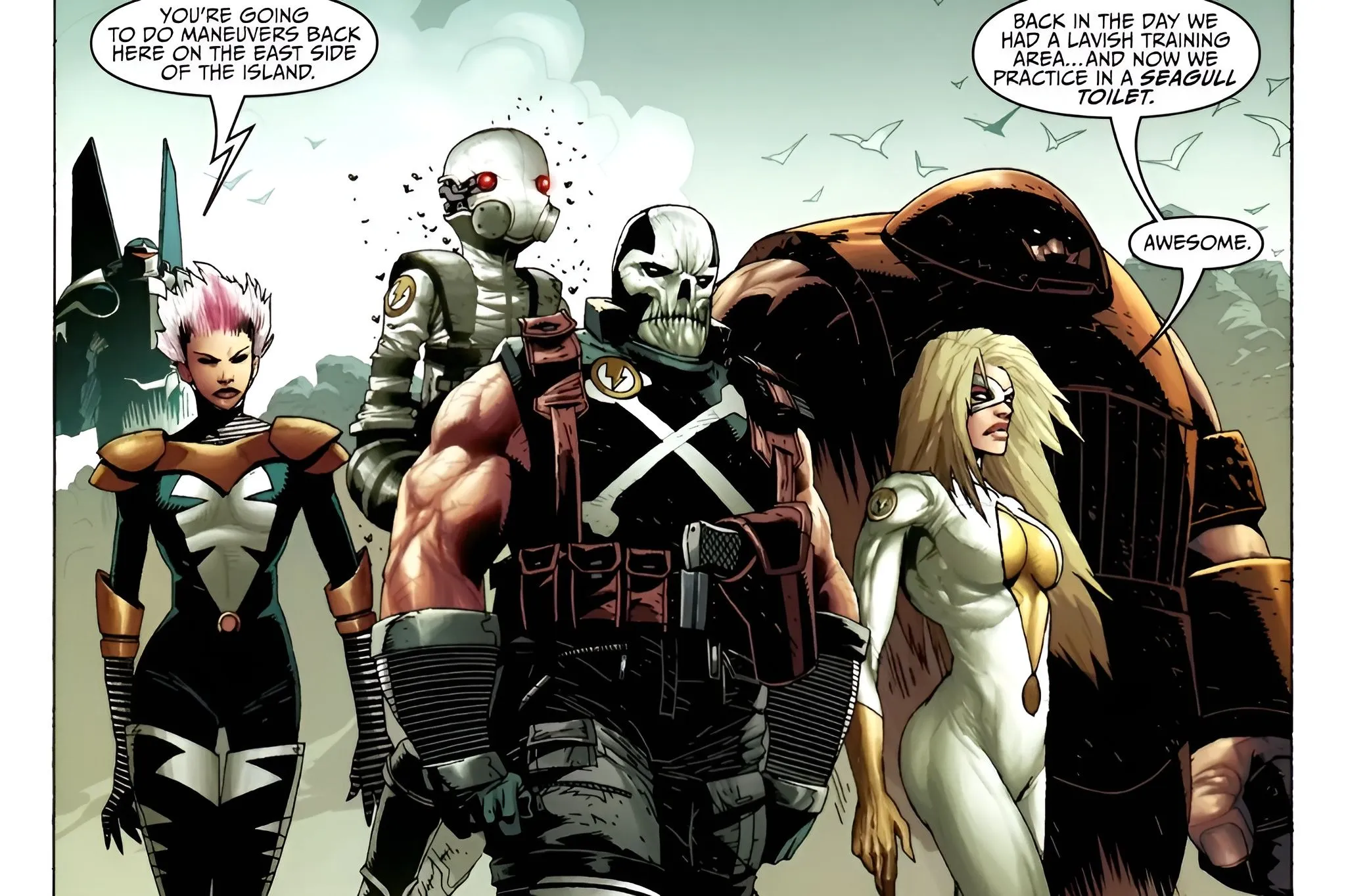
|
Notable Members: |
||
|---|---|---|
|
Songbird |
MACH-V |
Juggernaut |
|
Ghost |
Crossbones |
Moonstone |
This team emerged following Norman Osborn’s controversial leadership. Luke Cage was appointed as the new leader, operating from The Raft, a super prison. Cage was determined to maintain a tight rein on this volatile team, understanding that many of his members had darker pasts. However, with the exception of Songbird, MACH-V, and Man-Thing, many of the members struggled to meet expectations and Crossbones’ betrayal led to yet another internal fracture before they could realize their potential.
14. The Secret Thunderbolts
Debuted In: Dark Avengers #1 (2009) by Brian Michael Bendis and Mike Deodato Jr.
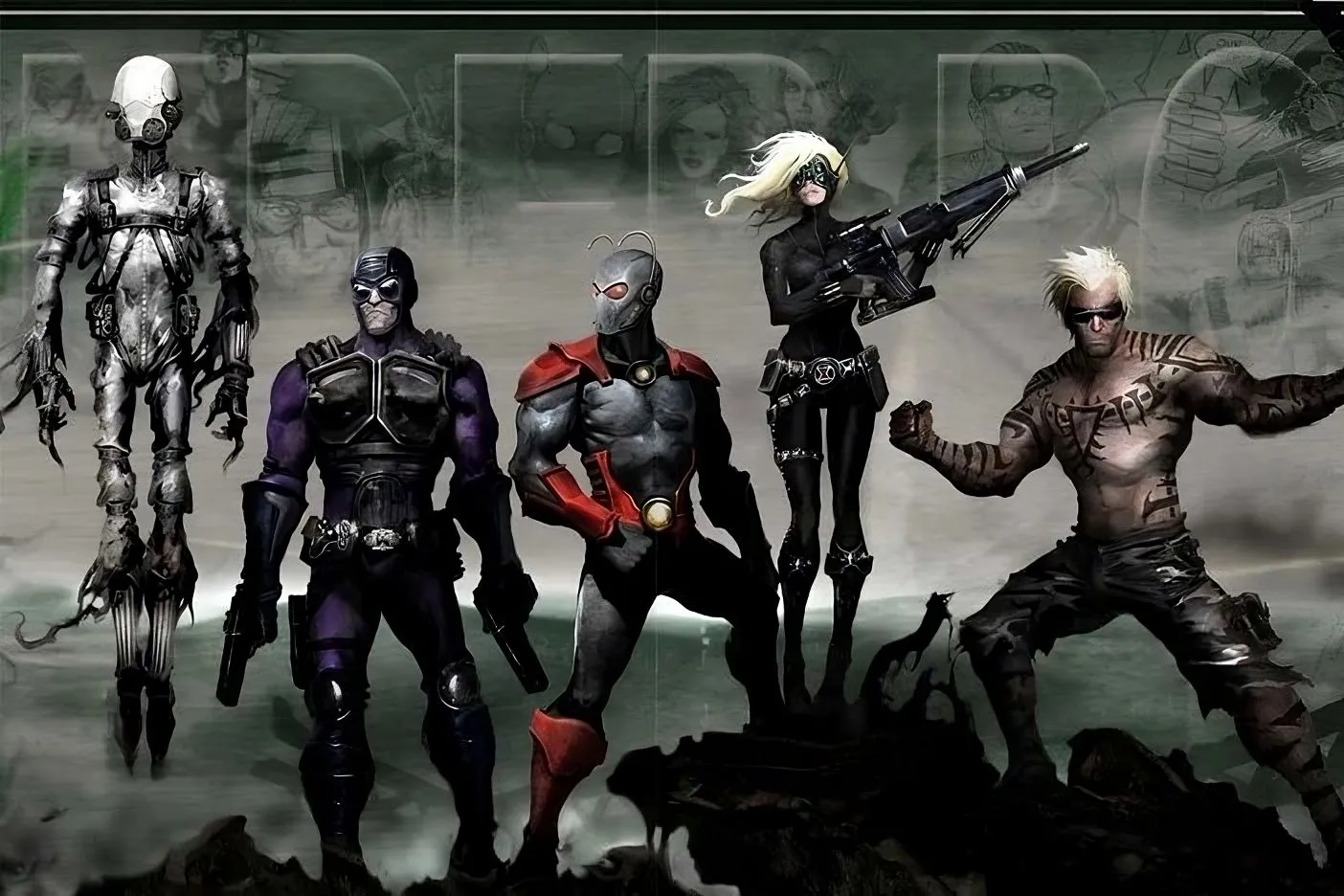
|
Notable Members: |
||
|---|---|---|
|
Ant-Man (Eric O’Grady) |
Headsman |
Scourge |
|
Mister X |
Paladin |
Grizzly |
During the Dark Reign storyline, Norman Osborn assembled a team of Thunderbolts to execute covert military operations while the Dark Avengers maintained a public facade. However, the team’s morally ambiguous nature led to inevitable failure as internal conflicts arose, leading to turmoil and confrontations with Osborn’s other forces, the Dark Avengers. The group became so distant from the Thunderbolts’ original purpose that its collapse was almost certain.
13. Thunderbolts I: The Founders
Debuted In: Thunderbolts #1 (1997) by Mark Bagley and Vince Russell
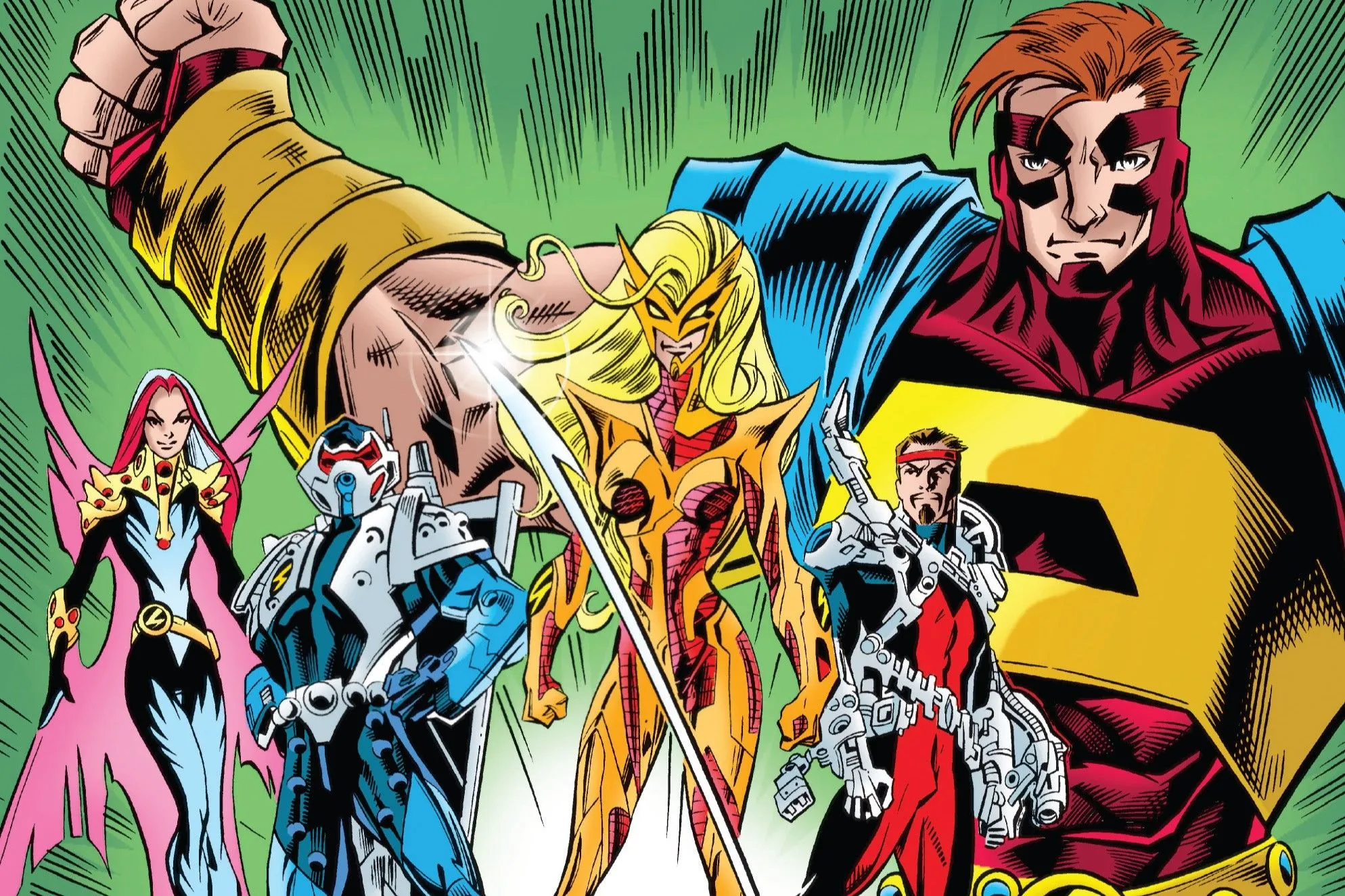
|
Notable Members: |
||
|---|---|---|
|
Citizen V (Baron Zemo) |
Techno (Fixer) |
Atlas (Goliath) |
|
Songbird (Screaming Mimi) |
Meteorite (Moonstone) |
Beetle (MACH-1) |
The inaugural team of Thunderbolts was orchestrated as a decoy by Baron Zemo and the Masters of Evil, masquerading as heroes to gain the government’s trust while plotting to exploit it. Zemo intended to enrich himself by gaining access to classified SHIELD and Avengers intel for criminal enterprises. The team, rooted in Zemo’s nefarious ideals, had mixed levels of commitment to their ruse.
While some, such as MACH-1, regretted their choices, others like Songbird began to value the respect that came with being heroes. Despite the unity they initially displayed, differing motives led to their eventual disbandment. Their effectiveness keeps them ranked higher, showcasing tight cooperation among powerful individuals, although Zemo’s duplicity ultimately dismantled them.
12. Thunderbolts: Heroes Reborn
Debuted In: Thunderbolts #60 (2002) by Fabian Nicieza and Patrick Zircher
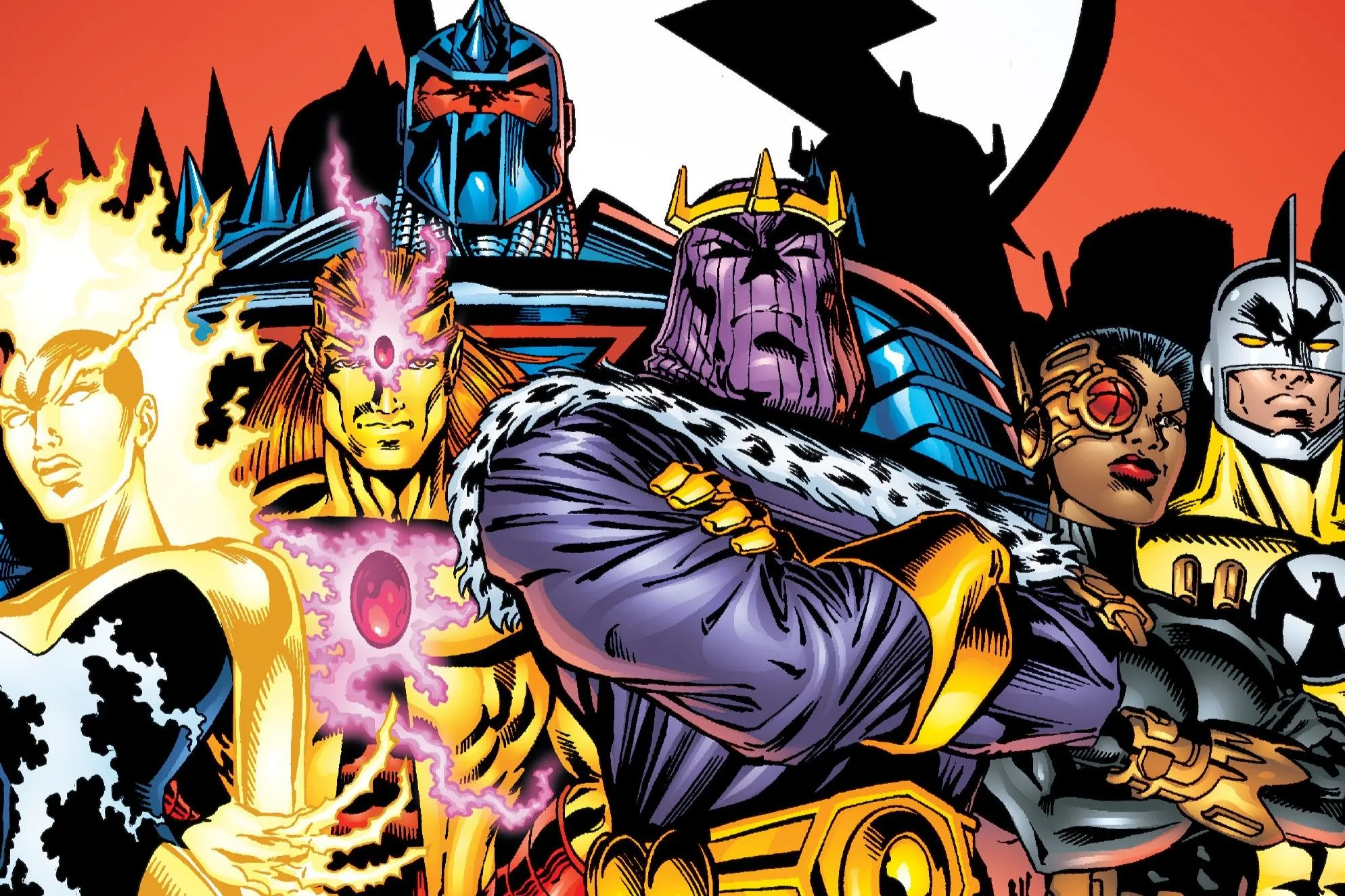
|
Notable Members: |
||
|---|---|---|
|
Heinrich Zemo |
Iron Cross (Helmut Zemo) |
Phantom Eagle |
|
Solarr |
Chain Lightning |
Makeshift |
These Thunderbolts hail from Counter-Earth, a fabricated dimension created by Franklin Richards following the Onslaught event to preserve heroes. This reality mirrors Earth-616 and features its own Thunderbolts team. Although this incarnation was short-lived, they boasted greater powers compared to their Earth-616 counterparts. Ultimately, however, they failed in a confrontation against the original Thunderbolts, leading to their uncertain whereabouts in subsequent discussions.
11. Thunderbolts II: Hawkeye’s Rogues
Debuted In: Thunderbolts #21 (1998) by Kurt Busiek and Mark Bakley
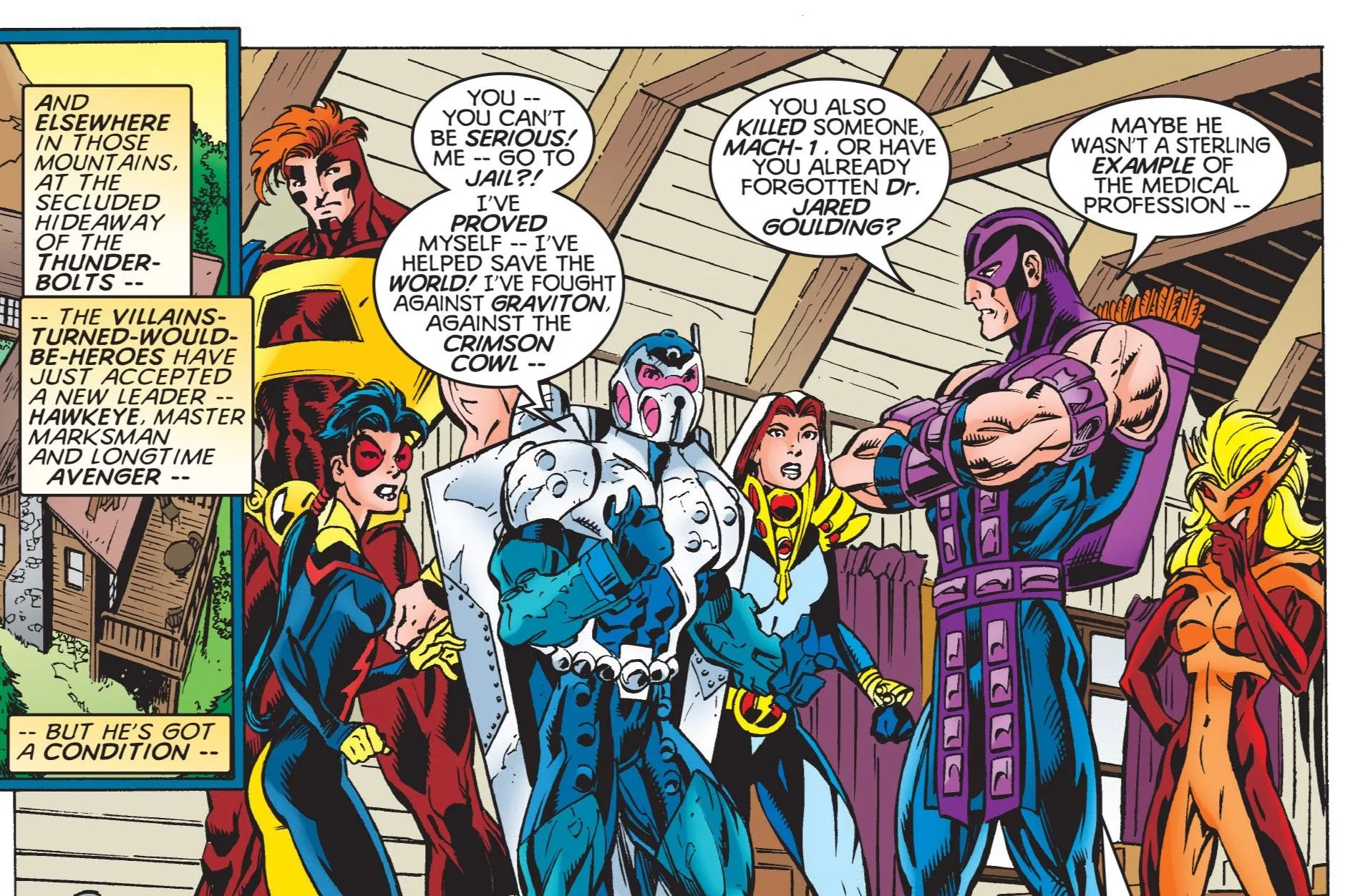
|
Notable Members: |
||
|---|---|---|
|
Hawkeye |
Atlas |
Songbird |
|
Moonstone |
Jolt |
MACH-2 |
Hawkeye led a reformation of the Thunderbolts, striving to provide guidance and direction following Zemo’s leadership. This diverse assembly of ex-villains endeavored to prove their worthiness as bona fide heroes. While they didn’t possess the raw power of other teams, their cooperative spirit and adherence to established leadership standards gave them remarkable potential for success within SHIELD and beyond.
10. Thunderbolts X: The Last “Heroes”
Debuted In: Devil’s Reign: Villains for Hire #1 (2022) by Clay McLeod Chapman and Manuel Garcia
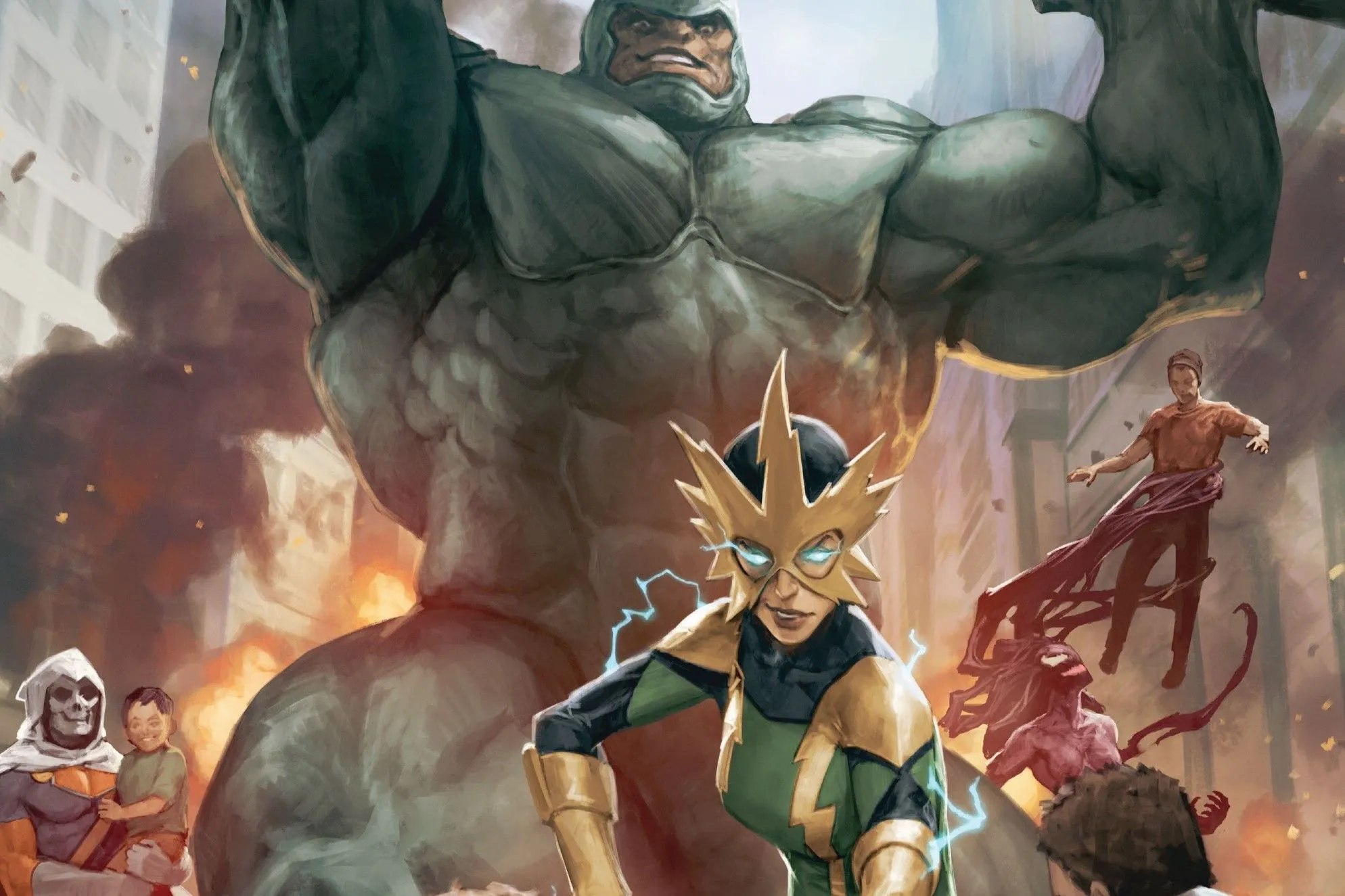
|
Notable Members: |
||
|---|---|---|
|
Taskmaster |
Whiplash |
Rhino |
|
Electro |
Agony |
Abomination |
Following the shortcomings of his first Thunderbolts team, Mayor Wilson Fisk formed a more competent group, selecting experienced villains who had collaborated in the past. Additionally, he established units supporting the main team, enhancing the Thunderbolts’ control over Gotham. However, internal dissent led to their undoing when Rhino’s defection revealed the team’s corruption to Champions and Avengers alike, resulting in their eventual downfall.
9. Thunderbolts IV: Hydra’s Puppets
Debuted In: New Thunderbolts #1 (2004) by Fabian Nicieza, Kurt Busiek, & Tom Grummett
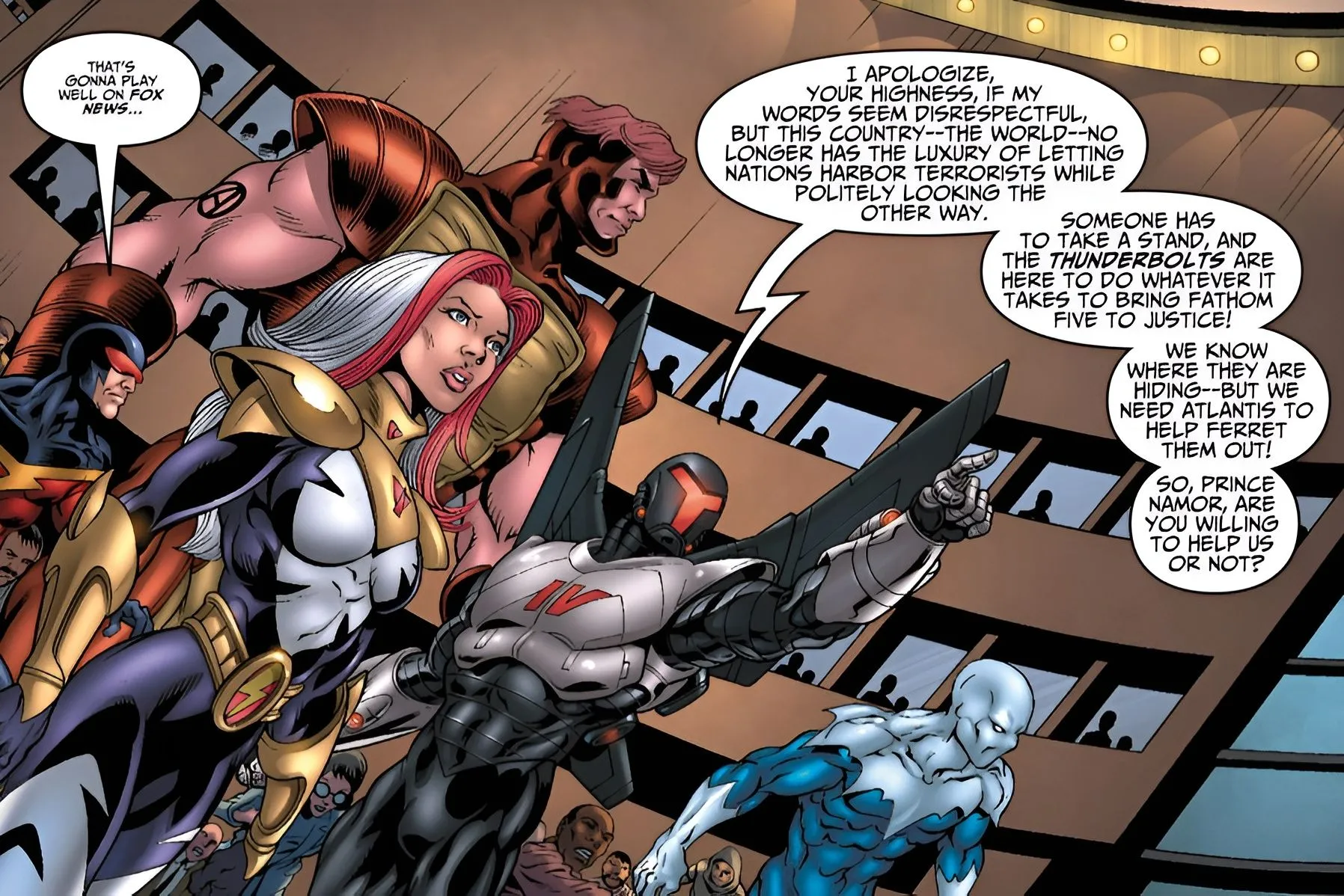
|
Notable Members: |
||
|---|---|---|
|
Songbird |
Speed Demon |
Atlas |
|
Blizzard |
MACH-IV |
Radioactive Man |
During a period of upheaval within the superhero community, MACH-IV took charge of a new Thunderbolts team aiming to fill the vacuum left by disbanding Avengers. However, in a controversial move, he struck a deal with Baron Strucker of Hydra, ultimately compromising the team’s integrity. Much of the group turned against the fascist ideology of Hydra, leading to their downfall as internal tensions grew deeper.
8. Thunderbolts XI: Luke Cage’s Redeemers
Debuted In: Thunderbolts #1 (2022) by Jim Zub and Sean Izaakse
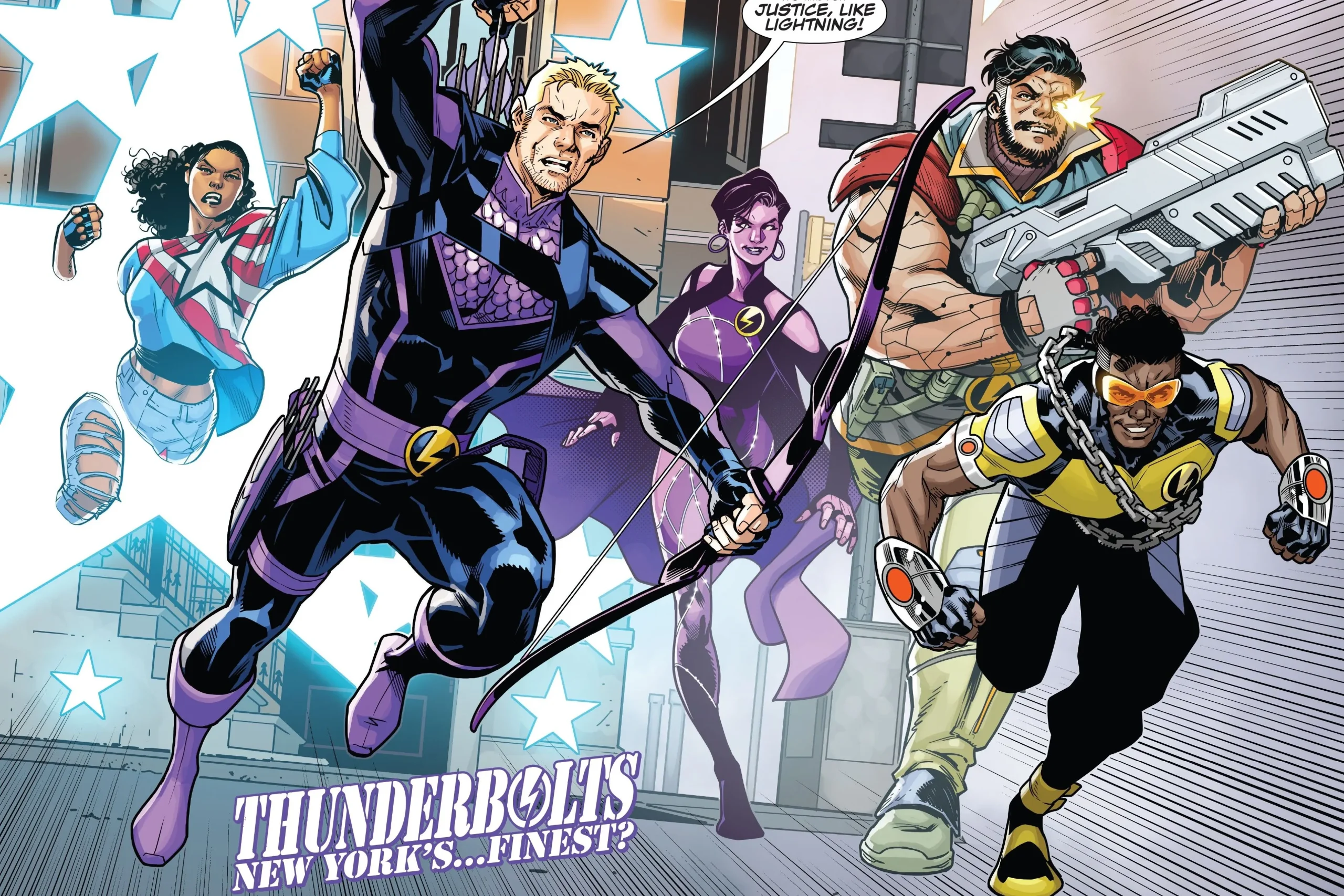
|
Notable Members: |
||
|---|---|---|
|
America Chavez |
Persuasion |
Gutsen Glory |
|
Power Man |
Spectrum |
Hawkeye |
In the wake of Wilson Fisk’s exit from office, Luke Cage rose to power, aiming to revitalize the Thunderbolts’ image with a focus on genuine heroism. This revamped Thunderbolts consisted primarily of heroes, alongside rehabilitated children of villains, cementing their status as NYC’s official peacekeepers. Although they are currently inactive, their diverse powers—including those of America Chavez and Power Man—marked them as a formidable group, with the only drawback being a lack of organization due to their varying ages.
7. Thunderbolts V: Baron Zemo’s New Thunderbolts
Debuted In: New Thunderbolts #16 (2005) by Fabian Nicieza and Rick Leonardi
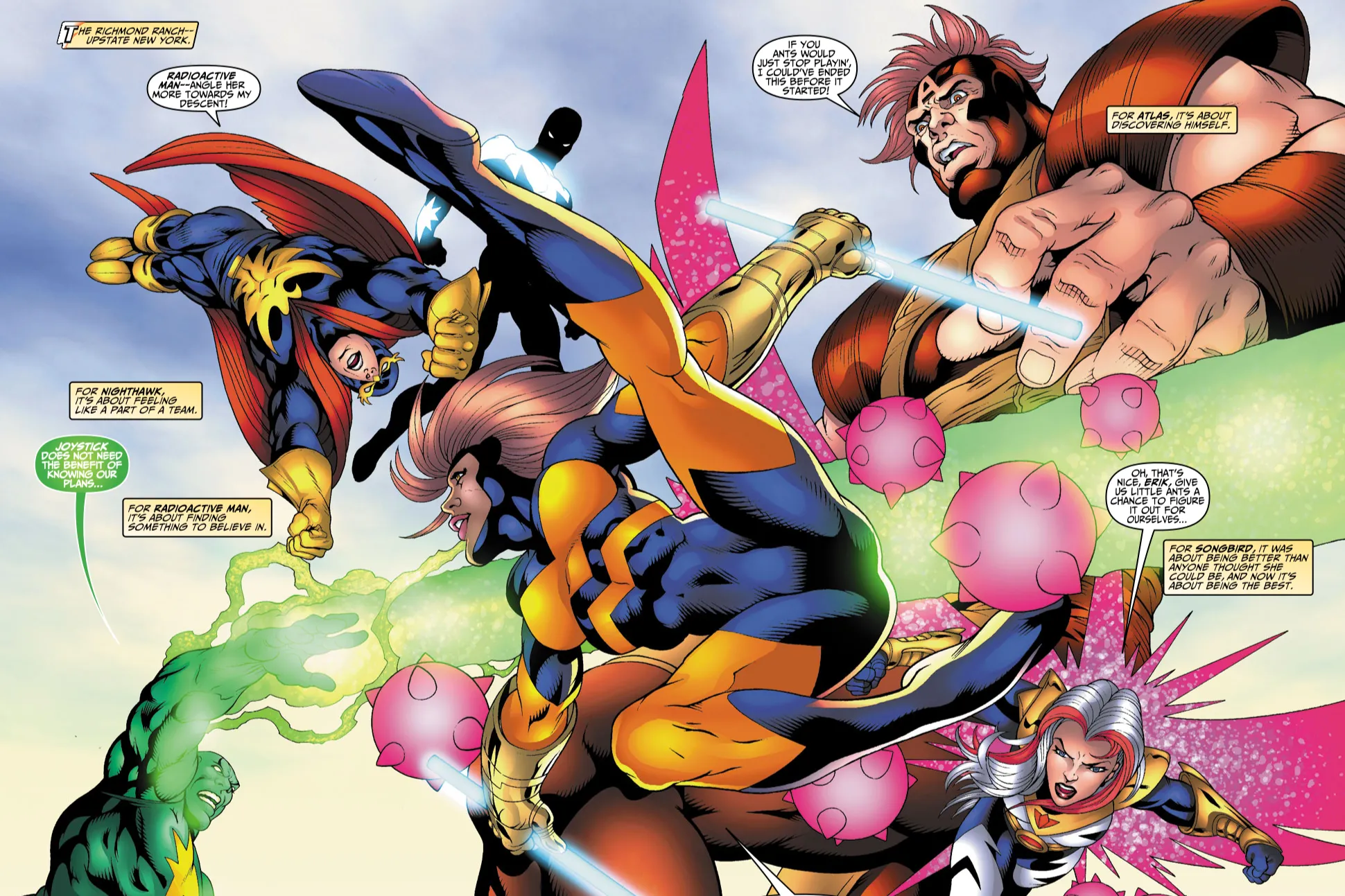
|
Notable Members: |
||
|---|---|---|
|
Songbird |
Atlas |
Blackout |
|
Nighthawk |
Swordsman |
Smuggler |
Baron Zemo returned to the helm of the Thunderbolts after the Hydra-affiliated team fell apart. This time, Zemo skillfully manipulated the team, leveraging Songbird’s affections and Atlas’ family obligations for control. Striking a balance of discipline and villainy, this group found modest success, proving their worth against the Squadron Sinister. Ultimately, the team’s disbandment stemmed not from its corrupt nature but rather due to external conflicts, such as the Civil War among superhumans.
6. Civil War Thunderbolts: Team Iron Man
Debuted In: Thunderbolts #103 (2006) by Fabian Nicieza and Tom Grummett
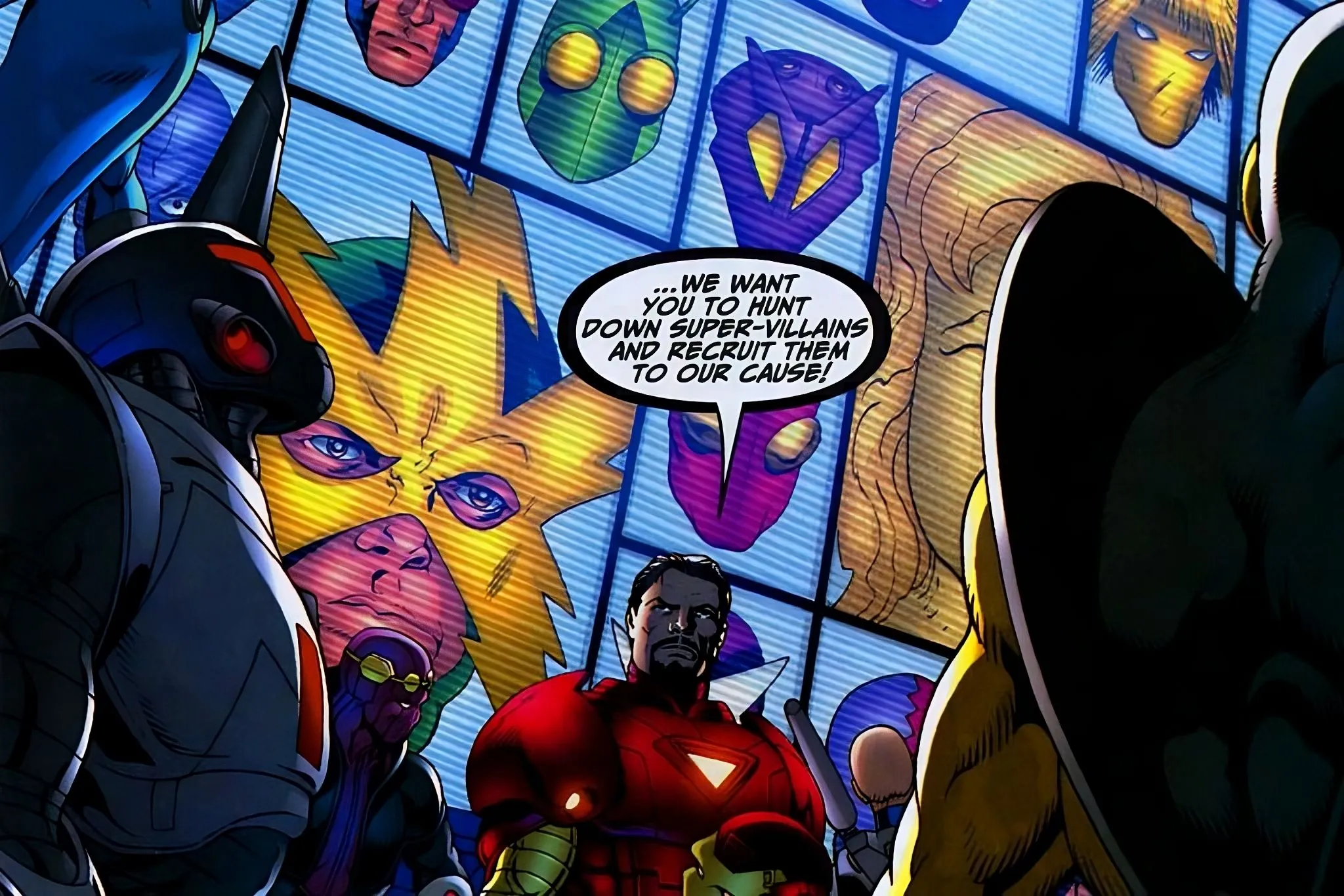
|
Notable Members: |
||
|---|---|---|
|
Songbird |
Venom (Mac Gargan) |
Bullseye |
|
Taskmaster |
Lady Deathstrike |
Jack O’ Lantern |
This Thunderbolts iteration broke the earlier mold of rehabilitative efforts, leaning more toward a coercive approach. Operating similarly to the Suicide Squad, their members—held in check by implanted inhibitors—were tasked with taking down Captain America’s Secret Avengers. This team was marked by a volatile, often fractious nature, but also by remarkable power. The broader assembly became an army of villains, demonstrating a tactical yet violent side to the Thunderbolts’ legacy.
5. Thunderbolts VI: The Hero Hunters
Debuted In: Civil War: The Initiative #1 (2007) by Brian Michael Bendis, Warren Ellis, & Marc Silvestri
|
Notable Members: |
||
|---|---|---|
|
Venom (Mac Gargan) |
Songbird |
Penance (Speedball) |
|
Bullseye |
Radioactive Man |
Moonstone |
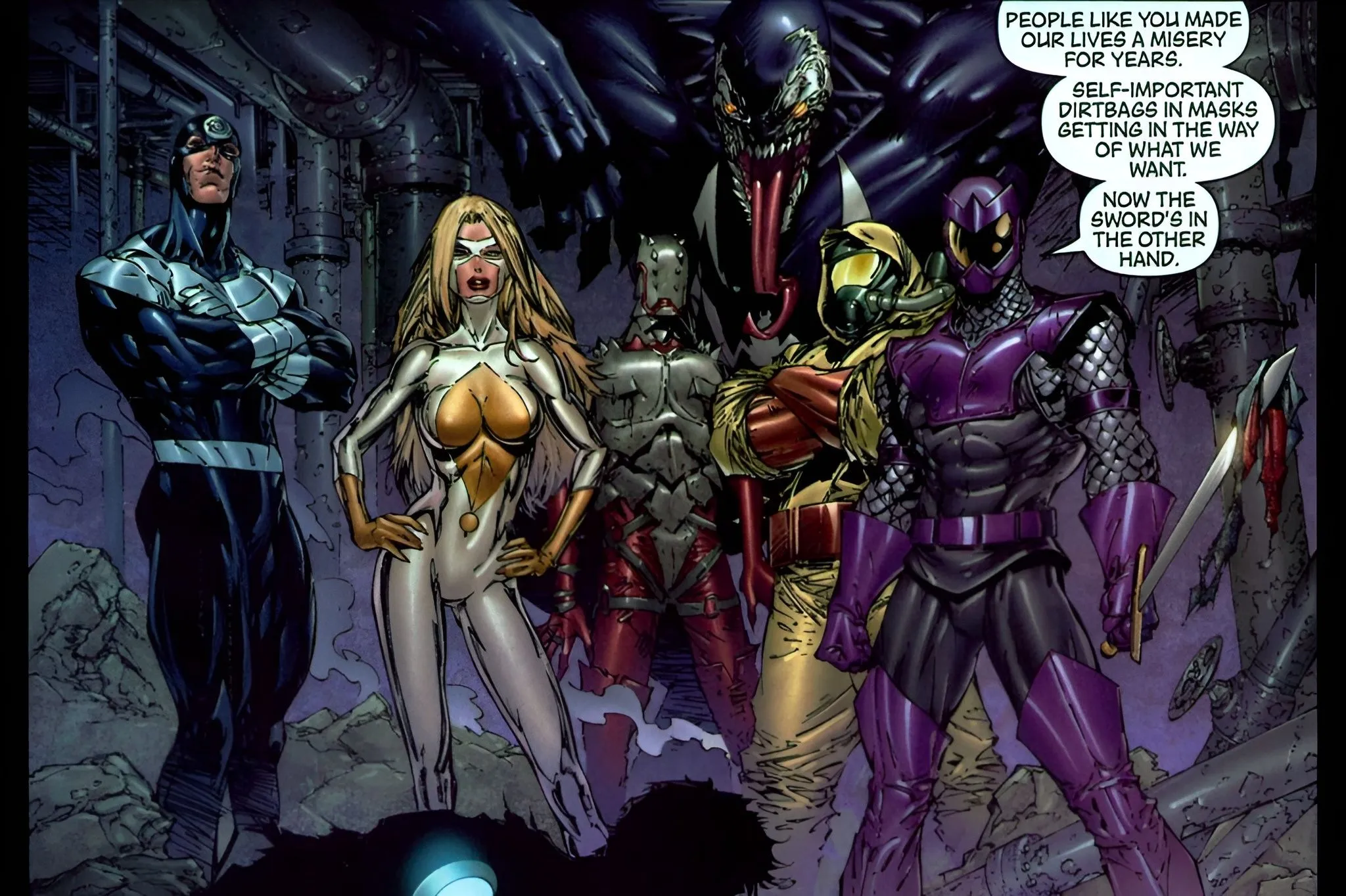
Following the Civil War, Norman Osborn took charge of a new, smaller Thunderbolts team, which sought to retain some of its heroic intentions. Known as “Golden Heroes,” they served as a public relations front while furthering Osborn’s agenda. During the Skrull invasion, this iteration gained recognition for its heroics. The standout addition was Speedball, now transformed into the formidable Penance, whose tragic past fueled a new kind of strength in the group.
4. The Time-Travelling Thunderbolts
Debuted In: Thunderbolts #163 (2011) by Jeff Parker and Declan Shalvey
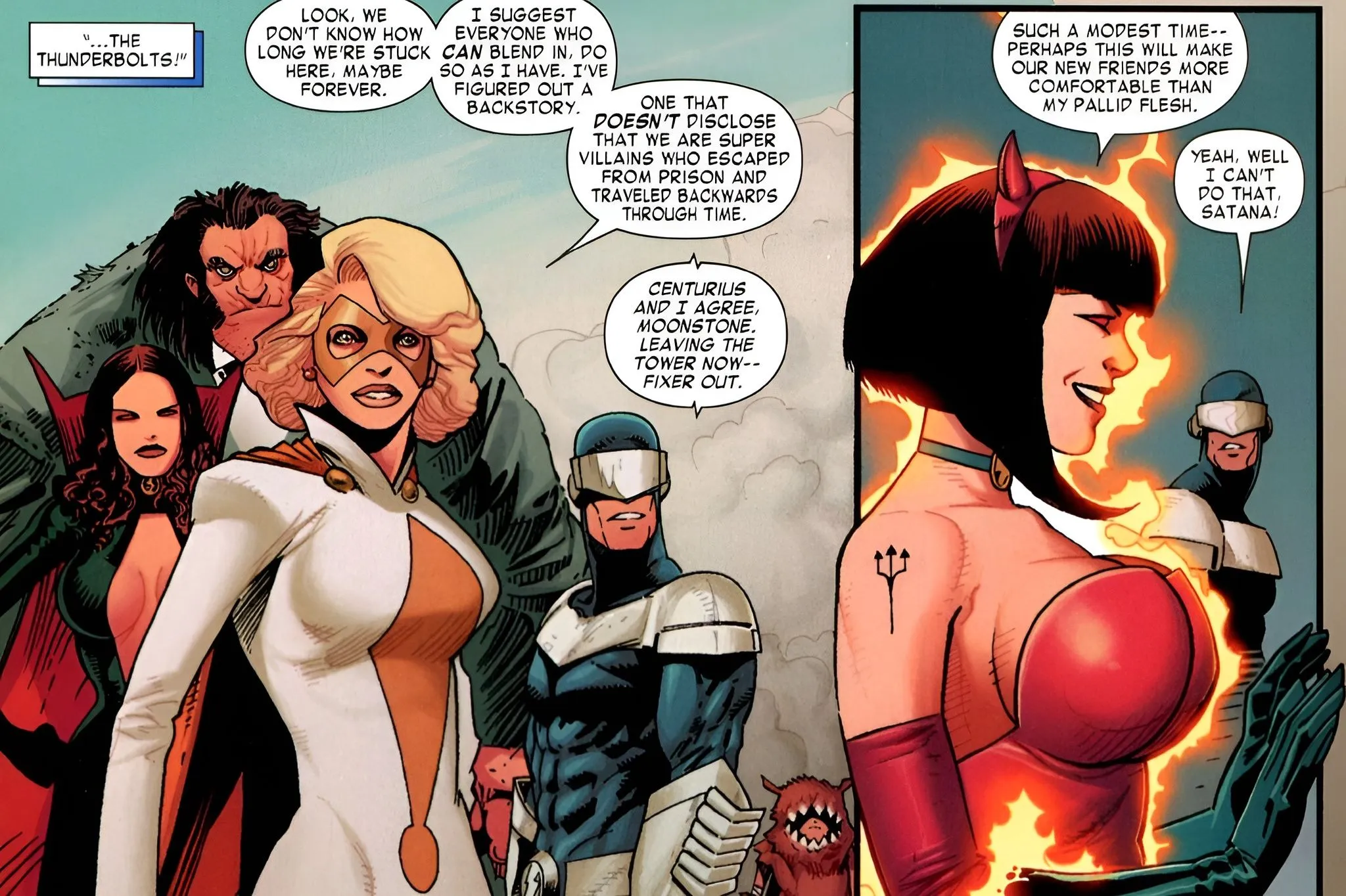
|
Notable Members: |
||
|---|---|---|
|
Satana |
Fixer |
Mr. Hyde |
|
Boomerang |
Centurius |
Troll |
This story arc turned the Thunderbolts into time-travelers after a teleportation mishap during an attempted escape. They traversed significant periods, including WWII and Camelot. Their journey culminated in rebellion against the oppressive regime of the Dark Avengers in a dystopian future, and their eventual return to the present resulted in renewed recognition as heroes. This version of the Thunderbolts is notable for its inclusion of a magic user, showcasing diversity in powers and perspectives while effectively preventing the internal strife that plagued other teams.
3. Thunderbolts VIII: The Fugitives
Debuted In: Avengers Standoff: Assault On Pleasant Hill Omega #1 (2016) by Nick Spencer, Daniel Acuna, and Angel Unzueta
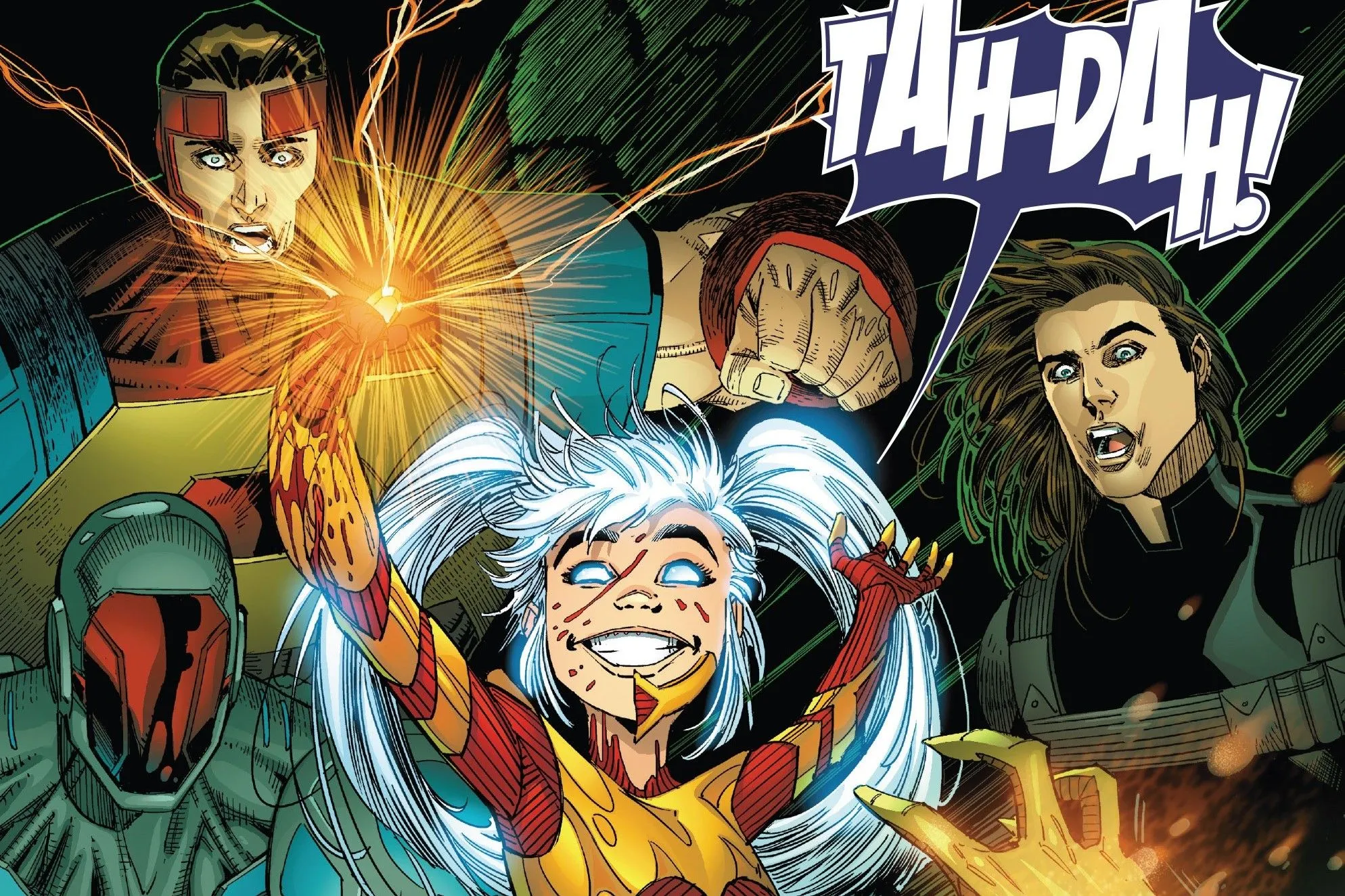
|
Notable Members: |
||
|---|---|---|
|
Winter Soldier |
Fixer |
Atlas |
|
Moonstone |
MACH-X |
Kobik |
This iteration of the Thunderbolts operated without formal sanctioning after a revolutionary mission led by Winter Soldier. The group formed a bond with Kobik, an AI that had gained consciousness, ultimately leading to a revolt against SHIELD’s digital prison. Despite the impressive powers of members like MACH-X and Atlas, the fragmented goals prevented them from achieving a higher purpose. Their potential was undermined when Baron Zemo managed to recruit many back into his fold, contributing to the team’s dissolution.
2. The Revolution’s Thunderbolts
Debuted In: Thunderbolts #1 (2023) by Collin Kelly, Jackson Lanzing, & Geraldo Borges
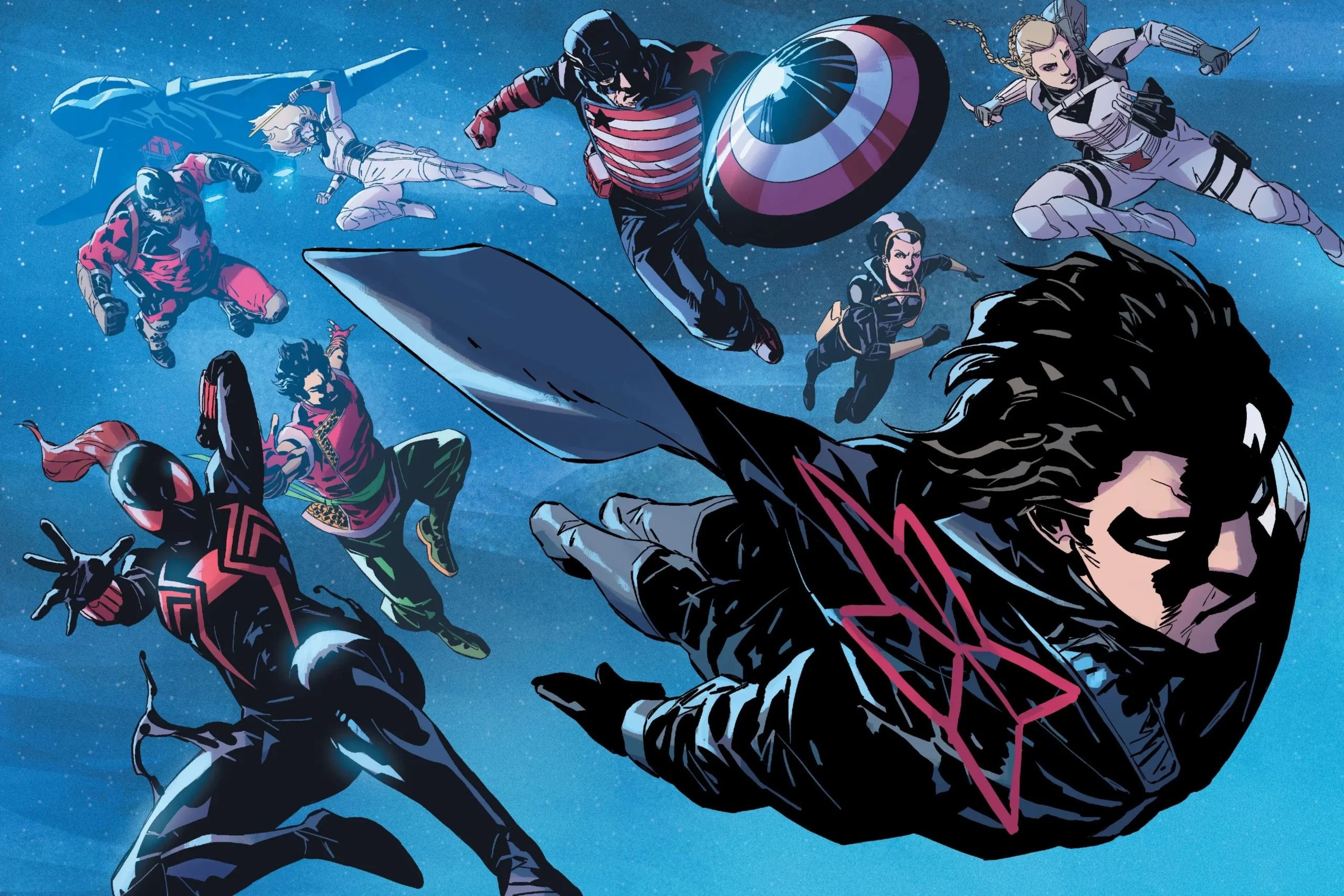
|
Notable Members: |
||
|---|---|---|
|
Black Widow |
White Widow |
Red Guardian |
|
Shang-Chi |
Valentina de Fontaine (LMD) |
U.S. Agent |
This latest formation of the Thunderbolts appears strategically assembled to reflect the lineup in the upcoming film, focusing on morally ambiguous operatives working toward positive change. Characterized as an anti-Red Skull task force, they faced formidable foes such as the Red Skull and Doctor Doom, showcasing their effectiveness in confronting evil. With diverse powers and extensive experience, this team exemplified the Thunderbolts’ mission of rehabilitation. Their ultimate success in taking down Red Skull highlighted their potential, although they lacked raw strength that the top ranking team possessed.
1. Red Hulk’s Thunderbolts
Debuted In: Thunderbolts #20 (2012) by Charles Soule and Carlo Barberi
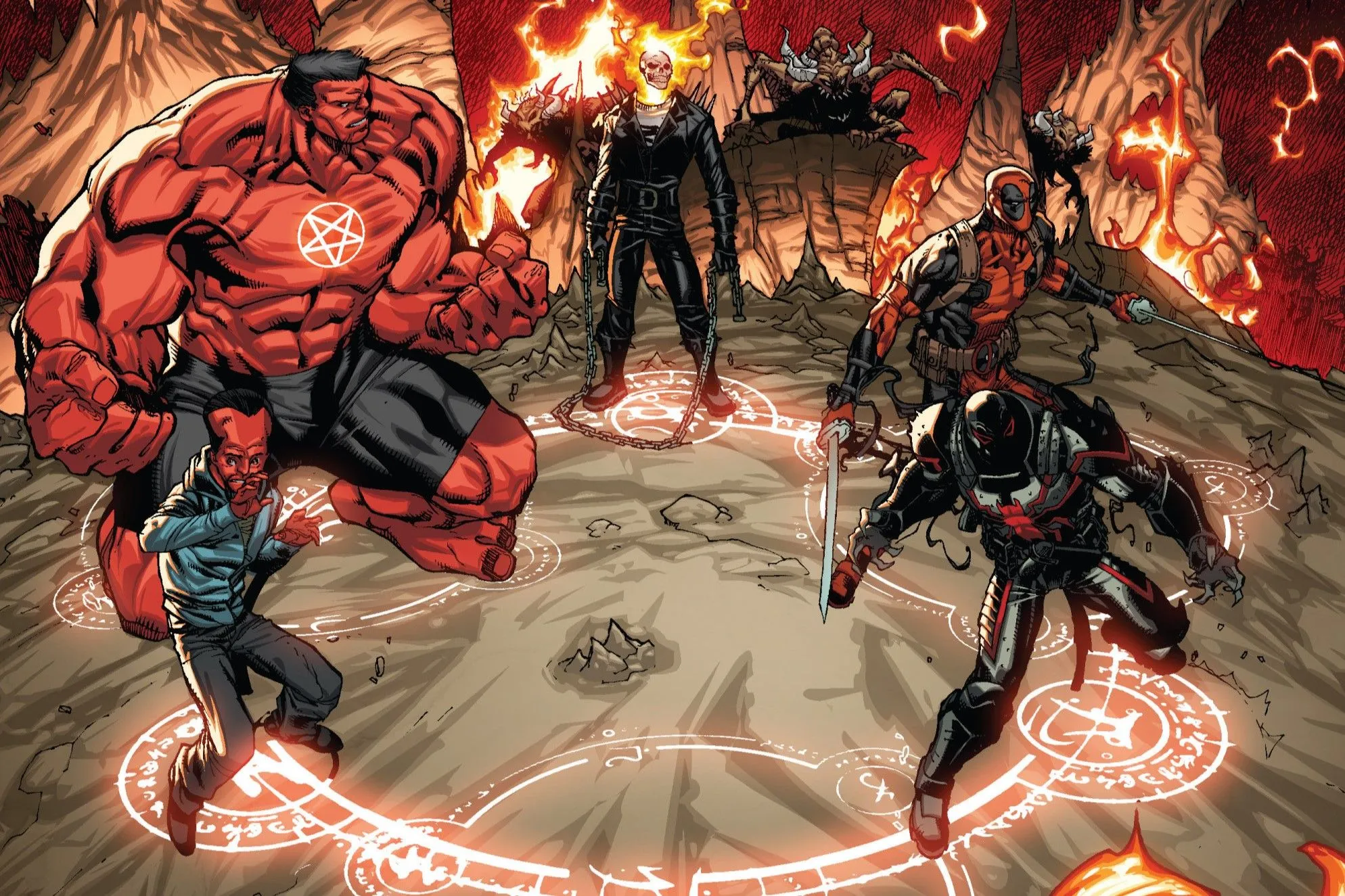
|
Notable Members: |
||
|---|---|---|
|
Agent Venom |
Deadpool |
Elektra |
|
Ghost Rider |
Punisher |
Red Leader |
This version of the Thunderbolts faced unique challenges as recognizable villains, constantly vying for dominance under the volatile leadership of Red Hulk. Although marked by infighting and a lack of cohesive direction, the group made up for it with unparalleled strength. With members like Deadpool, Elektra, and Punisher—each proficient in lethal combat—the real muscle of the team came from Agent Venom’s controlled symbiote powers and the supernatural strength of Ghost Rider. Collectively, they represented the most powerful compact of heroes and anti-heroes among all Thunderbolts iterations, undeniably making them the strongest team.
